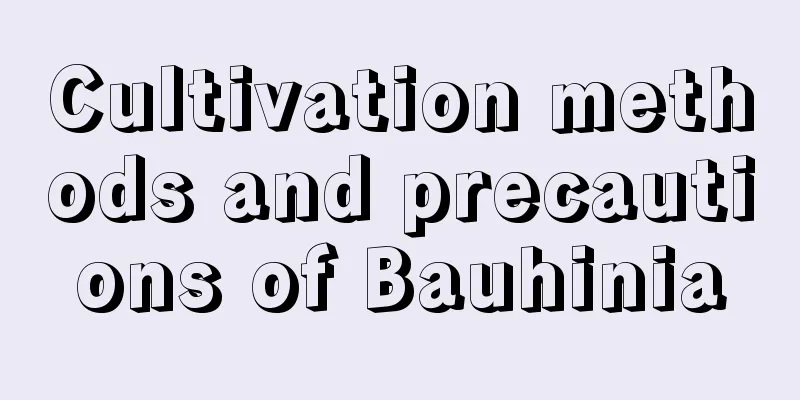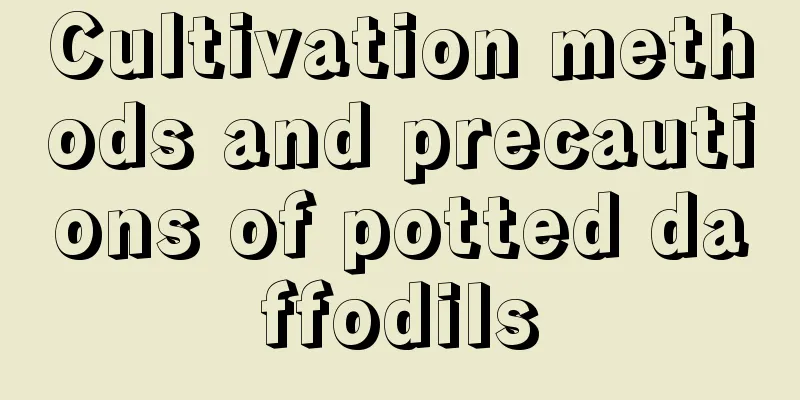Cultivation methods and precautions of Bauhinia

How to grow BauhiniasoilBauhinia prefers acidic soil and can tolerate barrenness, but it grows better in fertile soil. It requires loose and well-drained soil, and sandy soil is preferred. When transplanting Bauhinia, it is best to bring some soil to its roots and transplant it with the soil. Light and temperatureBauhinia bauhinia prefers an environment with plenty of sunlight and requires a warm growing environment because it is not very cold-resistant. In the process of growing Bauhinia, sufficient light needs to be ensured. However, Bauhinia is shade-tolerant. In the summer when the temperature is high and the light is strong, shade can be provided to prevent exposure. The suitable temperature for the growth of Bauhinia is between 23℃ and 34℃. The temperature for overwintering needs to be kept above 5℃. If necessary, the potted Bauhinia should be placed in a greenhouse or a warm room for the winter. Watering and fertilizingBauhinia prefers a moist environment, but avoid waterlogging. In spring and autumn, keep the water sufficient and water more frequently to maintain a certain humidity. In autumn and winter, the potted plants can be kept drier and watering should be reduced. It is best to water at noon in winter. Fertilization needs to be based on the growth conditions of the plant. Generally, liquid fertilizer can be applied 1-2 times during the growth period, and several times of decomposed thin fertilizer water can be applied after flowering. In autumn, you can apply some phosphorus fertilizer to promote flowering next year. Things to note when growing BauhiniapruneAfter the Bauhinia flower blooms, you can prune it, cutting off the overgrown branches, diseased branches, and weak branches, and keeping the old branches that bloom. In summer, you can pinch off the tips of the trees to promote the growth of flower branches and make the crown fuller. RepottingBauhinia is generally repotted every 2-3 years, usually in autumn. In autumn, you can combine repotting, root pruning, and replacing the culture soil. Pest controlBauhinia bracts may be attacked by diseases such as angular leaf spot and sooty mold, as well as pests such as aphids and large bagworms. |
<<: Cultivation methods and precautions of red banana
>>: Cultivation methods and precautions of peach
Recommend
Is ginger flower suitable for home cultivation? When does it bloom?
1. Is it suitable for family breeding? Ginger flo...
How to grow Hoya in autumn
1. Loosen the soil In autumn, it is best to use a...
How to propagate figs by cuttings
The fig tree is a very common fruit tree in farme...
How to grow onions
1. Maintenance methods 1. Temperature: It has a v...
What is the best season to plant lotus?
Which month is suitable for planting lotus? Lotus...
Lettuce planting method and steps, lettuce cultivation technology and time
Lettuce is a vegetable that we often eat in our d...
How to change the soil of iron tree
When should I change the soil for my iron tree? I...
What is the one with green leaves all year round?
1. Trees 1. Pine: The leaves of this tree are gre...
Is it profitable to grow cacti? What are the profits and prospects of growing cacti?
Is it profitable to grow cactus? Cacti are mostly...
Can poinsettia be hydroponically cultivated? Hydroponics cultivation methods and precautions
Can poinsettia be grown hydroponically? Poinsetti...
Strelitzia reginae flower language
One of the flower language No matter when or wher...
4 common mistakes in caring for succulent plants
Plenty of sunlight Meat fans all know that succul...
How often should I water Milan? Should I water it frequently?
How often should Milan be watered? Milan likes mo...
What kind of flowerpot is good for jasmine?
What kind of flowerpot is suitable for jasmine? J...
These 8 kinds of flowers have a particularly long flowering period, so you can enjoy flowers all year round by growing one in a pot!
Begonia Flowering period: all year round 1. Begon...









